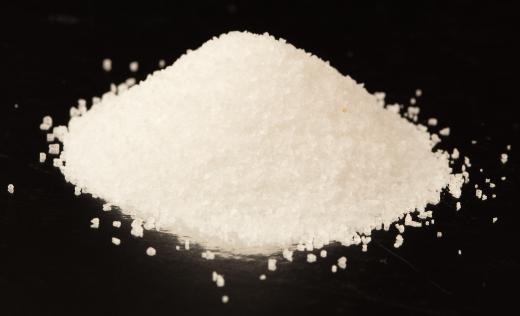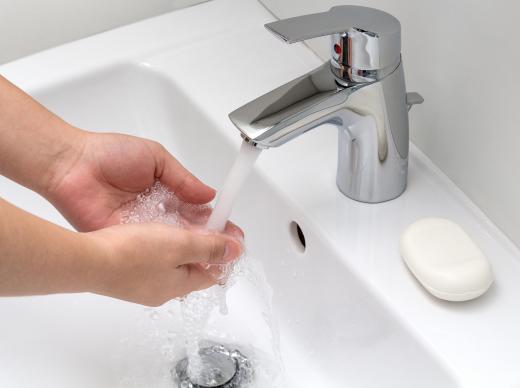How Do I Deal with a Sulfuric Acid Spill?
Dealing with a sulfuric acid spill is typically a multi-step process that includes checking yourself and other nearby individuals for exposure, ensuring that the area is ventilated, and isolating the spill to prevent its spreading. Large spills often have to be cleaned by professional hazardous materials teams because of how dangerous they are, but small splashes or minor puddles can sometimes be handled independently, often with sodium bicarbonate or other compounds that will help the spill clump up. This still requires a great deal of caution, though, as well as strict adherence to protocol. Acid spills are very serious and must usually be treated as such in order for everyone involved to stay safe and healthy.
Ensure Personal Safety

The very first thing you’ll need to do after a spill is assess the situation, paying particular attention to whether any of the acid got on yourself or anyone else nearby. You should check your clothes and skin because sulfuric acid can easily eat through or burn both of these. Clothes that have been splashed should be removed immediately, and exposed skin or eyes should be washed for at least 15 minutes with cool, clean water to rinse away and dilute the acid. Failing to do this before moving on may result in disfiguring burns and extraordinary pain.
Importance of Ventilation

Once you’ve checked yourself and everyone near you, it’s a good idea to make sure that the room with the spill is as well ventilated as possible. If there are windows in the room be sure to open them; making sure that doors are open will help bring fresh air in from outside, too. If you’re in a lab with a ventilation hood or air evacuation system, turning this on may be wise.
Most experts don’t recommend trying to force air circulation with regular fans or air conditioning units, though, unless you also have a source of fresh air from the outside. Sulfuric acid fumes can be dangerous to breathe and you don’t want to spread them any farther than you have to within an enclosed space.
Assess the Situation
The next thing to do is to take a good look at the sulfuric acid spill, making note of how big of an area it covers and the approximate volume present. You may be able to figure this out pretty easily if you know what caused the spill — for instance, a dropped beaker or burst container — but slow leaks and more mysterious pools of acid might require a bit more guesswork. What you’re basically looking to do is figure out if the spill is too big to clean up on your own.
Sulfuric acid fumes can be fatal, so if there is a large pool it’s usually best to call in a hazardous materials team and evacuate the area. It’s not usually worth risking respiratory problems and possible burns when professional help is available. Most community health offices have hazardous materials teams who are trained in dealing with substances like sulfuric acid, and some fire departments can be of assistance, too.
Small spills are easier to clean up independently, but safety is still a major consideration. Before approaching the area it’s important to put on protective clothing, which is to say, clothing that the acid can’t burn through. Mask, goggles, gloves and an acid-resistant apron are usually the minimum standard.
Cleanup Tips
In most cases it’s not a good idea to simply soak up acid spills since the liquid is often able to eat through cleaning rags and mops. A better idea is to start the cleanup by pouring sodium bicarbonate on the impacted area. This is included in most acid spill kits but, if one of these kits is not available, then regular baking soda, soda ash, or cat litter will usually have the same effect.
Sodium bicarbonate is a good choice because it will absorb the sulfuric acid and cause it clump, which in turn makes it easier to pick up and dispose of safely. You should not pick up the clumps immediately, though; while the powder will neutralize the acid, there is often some bubbling that can cause a chemical splash if you do not give it time to work.
Once the clumps have dried, sweep them up and dispose of them as chemical waste. The area should be washed with water and more sodium bicarbonate in order to pick up any remaining acid. This should be repeated several times to fully remove all residue, and it’s usually a good idea to stay out of the general area for a few days just to be sure everything has dried.
AS FEATURED ON:
AS FEATURED ON:












Discuss this Article
Post your comments